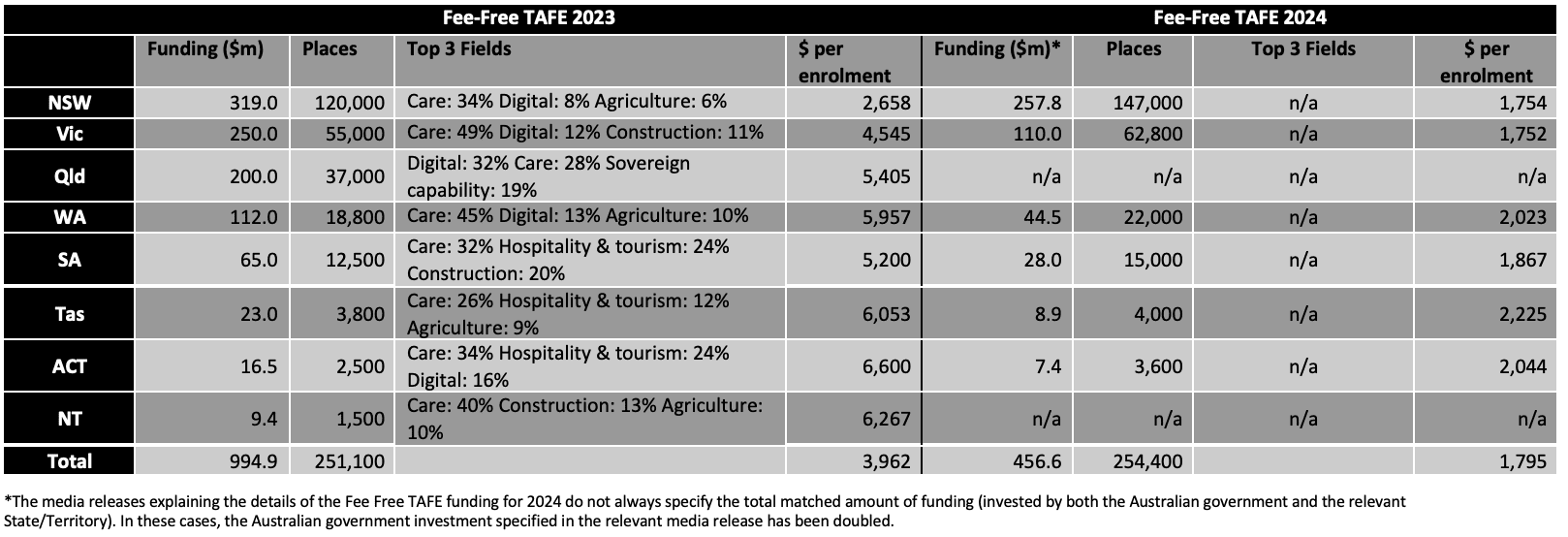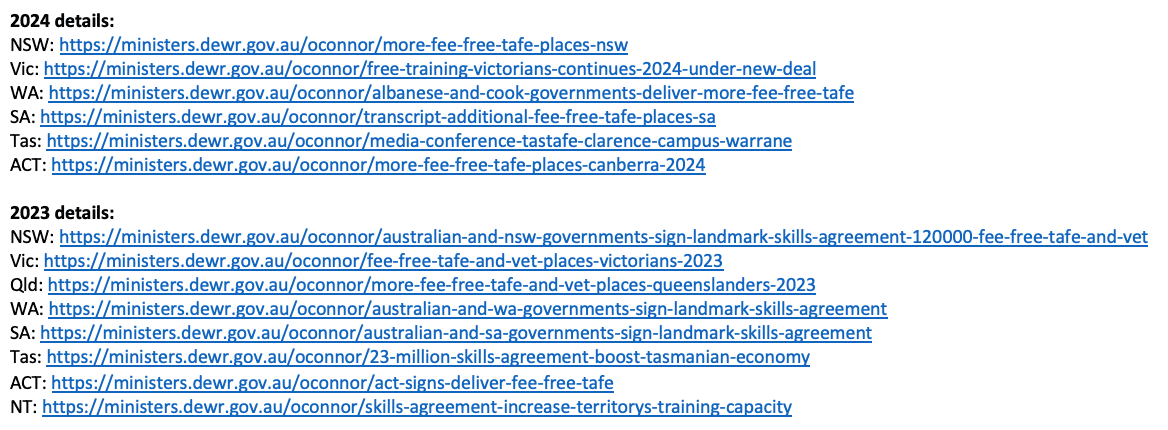
Fee Free TAFE in 2024 – prioritising more short courses…?
Fee-Free TAFE[1] is a signature Australian government policy. The Minister for Skills and Training released a media statement last week noting that the government’s 2023 Fee Free TAFE funding (matched by State and Territory governments) had delivered 300,000 places.
The media release notes that the original target for the program was 180,000 enrolments (although this was subsequently increased to 250,000 enrolments after the NSW government allocated some of its Fee Free TAFE funding to short courses (shorter courses typically cost less to deliver, meaning more places can be offered for the same quantum of funding).
No specifics are given in the release on how the additional 50,000 places delivered in 2023 were funded. It does not appear that governments increased their funding – which leaves one of two likely answers:
- other jurisdictions followed the NSW example and allocated more of their Fee Free TAFE places to short courses (presumably in response to student demand), and/or
- students who would have been exempt from fees under normal circumstances (eg they are a concession card holder) have been included in the total number of Fee Free TAFE enrolments even though they did not specifically receive/enrol in a Fee Free funded place.[2]
And so to Fee Free TAFE in 2024…
To date, based on a review of the media releases on the Minister’s website, all jurisdictions except Queensland and the Northern Territory have reached an agreement with the Australian government on Fee Free TAFE funding for 2024.
Unfortunately the latest releases contain less detail than those issued to announce the 2023 funding, which makes comparisons across years more difficult.
It appears though that TAFEs will receive less funding per place in 2024 than they did in 2023 – which may signal that more short courses will be offered. And given the pace of change occurring in workplaces across Australia and the resulting need to upskill and reskill workers this would be an appropriate policy response.
It might also be the case that fewer new/additional places are being funded this year and therefore more of the funding is being spent on subsidising the student fees in existing government-funded places. When the Fee Free TAFE policy was first announced it was always intended to be a mix of funding for new/additional places and funding to subsidise the student fees which would have been charged to students in some existing government-funded programs.
But what would be helpful would be more details on which types of courses (full qualifications versus short courses) are being funded, and more details on the industry areas/fields of study in which places are being offered. Unfortunately the 2024 Priorities and Indicative Workplan released by VET Ministers (the Skills and Workforce Ministerial Council) also does not include such details.
For now, here’s the best comparisons I can draw from the information included in the media releases announcing the 2024 Fee Free TAFE funding:[3]


This article was updated at 10.33am (AEDT) to incorporate the paragraph exploring the option that the 2024 Fee Free TAFE funding might be being spent on fewer new/additional places.
[1] A small portion of Fee Free TAFE funding is allocated to community and private providers, but it is commonly referred to as “Fee Free TAFE” funding and hence that descriptor is used here.
[2] For readers not deeply immersed in VET funding it is important to note that the TAFE sector has offered fee free places to students for decades – where a student’s personal circumstances makes them eligible for a waiver of their student fee (eg they are unemployed).
[3] Some readers may note that the 2023 details included above look similar to analysis published by Dr Craig Fowler. On 13 January 2023, some weeks earlier than Dr Fowler’s analysis was published, I shared the above analysis in an update to my subscribers, including Dr Fowler.




